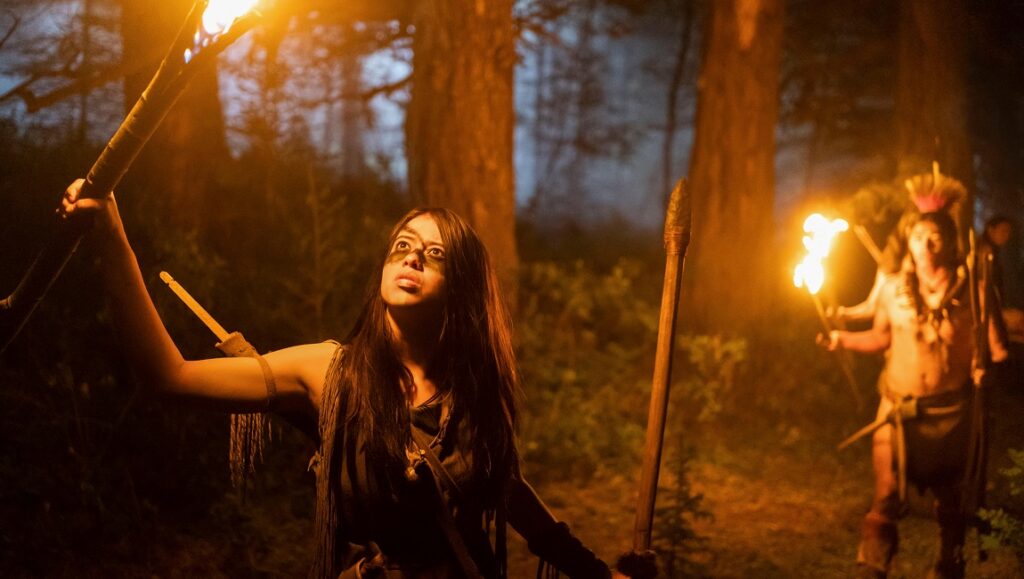Prey doesn’t always hit high action points, but remains rousing late-summer entertainment largely on the strength of its intelligent and formally impressive setting switch-up.
Almost exactly 35 years ago, John McTiernan’s first masterpiece, Predator, hit theaters. The story of an alien big game hunter who lands on Earth to hunt a squad of black-ops operators, it was largely dismissed by critics at the time as another lunkheaded Arnold Schwarzenegger killfest. But audiences flipped for it, and amongst its many fans today, the film is held up as a paragon of narrative and formal economy. It’s also, quite simply, a total blast. 1990’s Predator 2, even while an inferior product, can’t be dismissed either. It’s a graphic, almost Frank Miller-esque cartoon dystopia into which a monster movie has been dropped, a gratuitous blast that became a VHS and cable staple in its day.
Nevertheless, the Predator’s legacy is mostly that of crummy sequels, even though they all have their merits (although the less said about Shane Black’s misbegotten and studio-retooled The Predator, the better). That is, until now, maybe? Unceremoniously dropped onto Hulu by Disney, the latest installment of this intergalactic big buck hunter series is Prey. Where the previous films were either contemporaneous or set sometime in a near future, this one is set way back in 1715 (which is a minor callback to the 1990 sequel, you’ll see). A young Comanche woman, Naru (Amber Midthunder), stumbles across a Predator amusing himself by carving up bears, mountain lions, and the occasional member of her tribe. Naturally, she’s looked at by her family and peers as not tough enough to take on more (and more dangerous) responsibilities. She’ll show ‘em.
It’s an ingenious move. There’s always been an element in these films of the humans pitting their puny Earth weapons against the alien’s superior tech, but stone axes and arrows against energy beams and laser-guided flying guillotines is a tantalizing way to keep things off balance. And director Dan Trachtenberg (10 Cloverfield Lane) does a great job with this entirely outdoor experience: in fact, surprisingly given the genre and material, this is largely a daytime movie. You might not even mind the overreliance on CGI wild animals given how much subtle work is going into integrating an invisible antagonist within each of these frames. Another interesting choice: Prey was filmed with alternate takes for all the dialogue, so viewers can choose to watch the film in English or Comanche (for the record, the screener provided for review was a hybrid version).
Unfortunately, the action isn’t quite as strong as one might hope. The many fight scenes (both human v. monster and human v. human) are generally filmed handheld, although they’re choreographed with the more elaborate moves and speed audiences are getting used to in a post-John Wick era. Individual moments are often obscured by a quick camera move or even some digital motion blur, as these sequences are heavily augmented to mask hidden cuts and integrate digital blood and weapons. On occasion, though, the gore is more practical and the violence depicted a bit more clearly, and in these moments Prey is suitably and impressively gnarly. It’s a shame almost nobody will get to see it in a theater; it might be faint praise to call this good enough movie the best Predator sequel in over 30 years, but it’s almost perfect late summer entertainment in its utter satisfactory-ness. Plus, there’s a great dog performance!


Comments are closed.